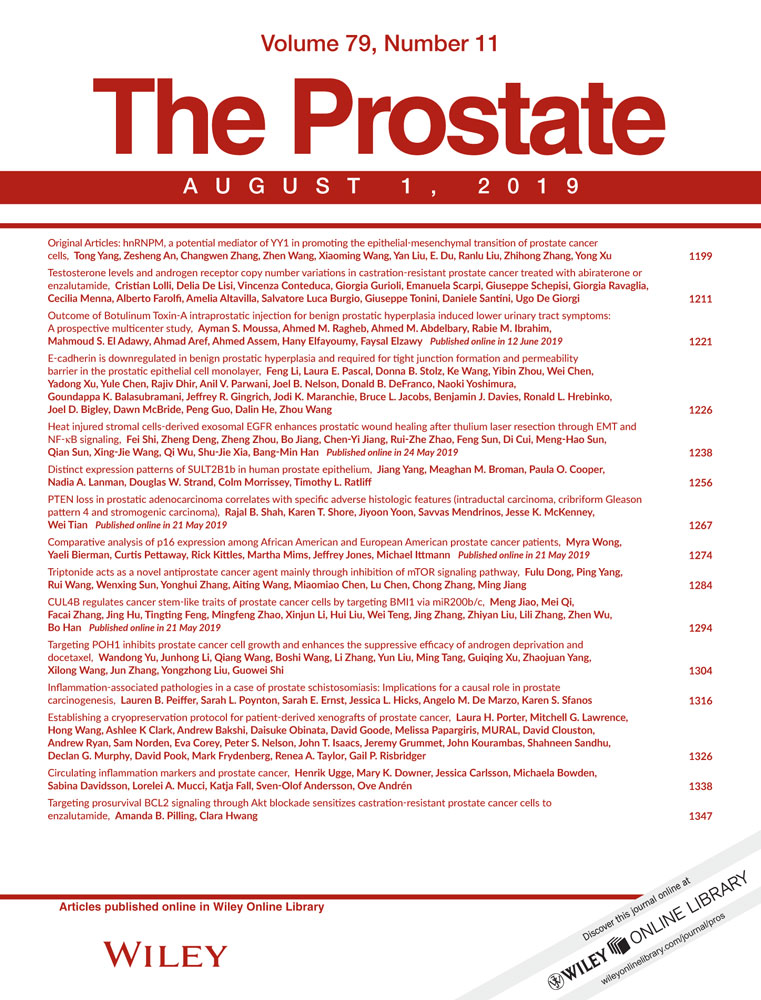Distinct expression patterns of SULT2B1b in human prostate epithelium
Abstract
Background
SULT2B1b (sulfotransferase family cytosolic 2B member 1b) catalyzes the sulfate conjugation of substrates such as cholesterol and oxysterols. Our laboratory has previously shown that SULT2B1b inhibition modulates androgen receptor signaling and induces apoptosis in prostate cancer cells. However, the functions of SULT2B1b in the prostate remain poorly understood.
Methods
We characterized the expression pattern of SULT2B1b in human benign prostate hyperplasia (BPH) as well as prostate cancer to determine the relationship between SULT2B1b and prostate diseases, using immunohistochemistry, immunofluorescence staining, immunoblot, and real-time polymerase chain reaction.
Results
SULT2B1b was strongly detected in the prostate epithelium but was absent in the stroma. Significantly lower SULT2B1b was found in primary cancer cells compared with adjacent normal epithelial cells. SULT2B1b further decreased in metastatic cancer cells. Most interestingly, we found, for the first time, that SULT2B1b was much more concentrated in the luminal layer than in the basal layer in both normal prostate and BPH samples. The stronger presence of SULT2B1b in luminal epithelial cells was confirmed by costaining with luminal and basal markers and in sorted paired luminal and basal cells. SULT2B1b expression was induced with prostate organoid differentiation.
Conclusions
SULT2B1b inversely correlates with prostate cancer status, with the highest level in the normal epithelium and lowest in the advanced metastatic prostate cancer. Furthermore, SULT2B1b is mostly located within the luminal layer of the prostate epithelium, suggesting that it may be implicated in luminal differentiation.
CONFLICT OF INTERESTS
The authors declare that they have no conflict of interests.




